Puffs usually are associated with clothes of peasants of the XVII century which were made of wide rectangular cloths, and the necessary form was given it due to assemblies, for example on the coquette, and embroideries of the formed folds.
For creation the puff on knitted cloth is not present need to do preliminary assembly of cloth – it is only necessary to define distance in ranks and loops and to collect cloth in process of advance.
Some general councils:
It is necessary to remember that puffs demand the big width of product, and density of assemblies depends on the chosen pattern.
Best of all the cloth of big width connected by elastic band or pattern with the repeating fragments approaches.
It is convenient to carry out puffs on lattice, elastic band or front smooth surface.
For giving of effect of nispadaniye of cloth soft folds it is necessary to use when performing puff thinner threads.
In all seams forming puffs uniform tightening of ranks of knitted cloth is important.
SEAM OF CELL
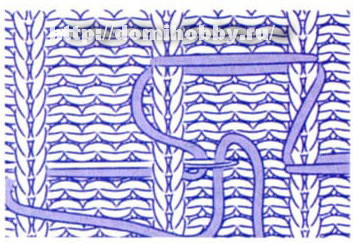
It is one of the most popular options of production puff at which the knitted fabric gathers through equal intervals, creating the drawing cells. The seam is carried out from left to right. Bring needle to upper side of work. Make seam needle through necessary quantity of loops back and pull together cloth. Enter needle for repetition of seam, but direct tip on upper side several rows below. Repeat this sequence over the following site of loops, going to the right but to make the second seam, transfer needle to level with the first seam and embroider across cloth with zigzag pattern. In seam of cell one zigzag is considered one row.
SUPERFICIAL SEAM OF CELL
It is kind of seam of cell, but broaches of thread are formed not on back, and on upper side of work. The seam is carried out from right to left. * Make on upper side horizontal stitch over required quantity of loops and pull together them. Enter needle several rows below and make stitch to fix the following site of cloth *. Repeat from * to *.
PLANIMETRIC seam
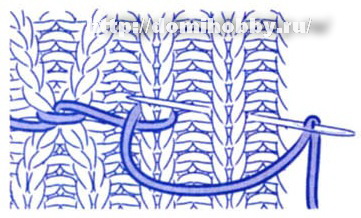
It is series of long seams needle back which are used for assembly. It is often carried out in upper and lower parts
puff. The seam is carried out from left to right. Bring needle to upper side of work. Holding needle over thread, make horizontal stitch over required quantity of loops and pull together cloth, having returned on upper side on one loop to the left. If to keep needle under thread, gain effect of the turned barley grain.
SEAM VAN DYCK
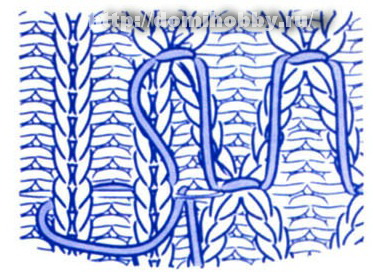
Thanks to this seam are formed the square or rectangular line of assemblies which is directed across product up-down.
The seam is carried out from right to left. Bring needle to upper side of work. Make small stitch needle back, having pulled together the first segment of cloth. Count necessary quantity of ranks down and enter needle into loop under the left edge of the first loop. Repeat stitch needle back to pull together the second part of cloth. Count ranks up and enter needle into loop over the left edge of the second loop.
SAMPLES OF PUFFS
SEAM OF CELL
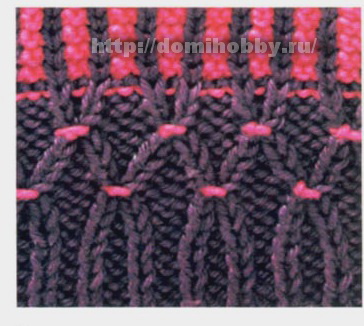
This seam is executed on the cloth connected by elastic band 1 x 2 with short rapport for creation of soft folds. If to increase rapport, the cloth will turn out more dense, with pronounced folds.
SUPERFICIAL SEAM OF CELL
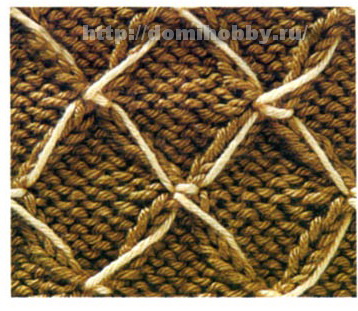
Long banners of superficial seam of cell are executed on elastic band 1 x 3. At such embroidery width of knitted cloth decreases.
SEAM VAN DYCK WITH BEADS
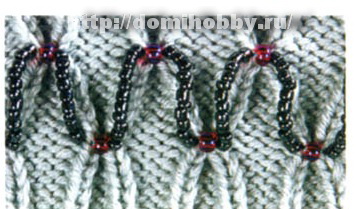
Before each small horizontal stitch add one big biserina, and before each long crossing point enter enough beads completely to close thread.
Material is prepared according to the book: Haksell K., Roberts L.
Decorative knitting by spokes
No comments:
Post a Comment